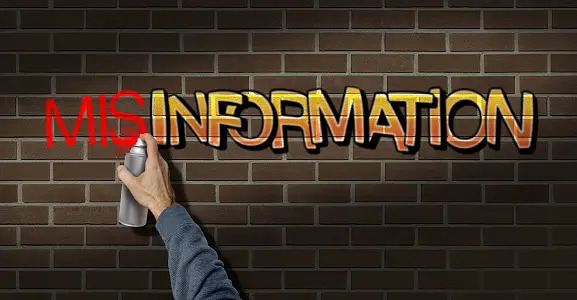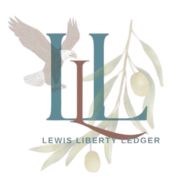
Misinformation and disinformation or propaganda as psychological warfare to control the narrative with false information or misleading facts in a 3D illustration style.
In recent years, the word “misinformation” has been widely misused and weaponized as a means to suppress free thought and speech. This paper aims to explore the historical instances where knowledge or practices once believed to be true and beneficial turned out to be harmful. It also examines how this phenomenon continues today with the weaponization of “misinformation” and the consequent impact on free speech and intellectual freedom.
By examining the historical misuse of the term, as well as its impact on scientific discourse, this paper sheds light on the dangers of stifling intellectual curiosity and discouraging the search for better solutions through the labeling of misinformation. True progress in science and society is achieved through open dialogue, critical thinking, and constant research, and it is essential to challenge the misuse of the word “misinformation” to safeguard these principles.
The word “misinformation” has become increasingly prevalent and controversial in recent years. While originally intended to identify false or misleading information, it has been misused as a tool to suppress dissenting opinions or alternative viewpoints. While our country was built on the whole concept of free thought, free speech and the pursuit of truth, the term misinformation has been improperly and recklessly used to stop the search for what is really true from that which may be orchestrated through propaganda. Herein lies a grave problem, insofar if this trend of using the word misinformation to stop progress continues, our nation and our entire world will quickly regress into an age that we may never recover from.
Historical Examples of Medical Procedures and Scientific Discoveries
By examining historical examples of medical procedures and scientific discoveries, showcasing the importance of evidence-based medicine, and highlighting the dangers of suppressing dissent and alternative viewpoints, we can begin to promote responsible use of the term to encourage critical thinking rather than stifling critically needed concerned voices altogether. To understand how the manipulation of the word “misinformation” can hinder progress, it is essential to examine historical examples. In the search for historical context, let’s consider the word lobotomy, once hailed as a groundbreaking treatment but eventually revealed to have harmful effects.
Lobotomy was considered a normal practice primarily during the mid-20th century. The surgical procedure gained popularity in the 1940s and 1950s in the United States. The peak year for lobotomies in the US was in 1949, with 5,074 procedures performed. By 1951, over 18,608 individuals had been lobotomized in the country. While there were dissenting opinions about the practice all together, many physicians then were vehemently opposed for questioning the practice as those who performed it sincerely believed that not only did it perform a beneficial function, but that the “science was settled” on the issue.
Those who fought against this deadly practice were thought to be spreading “misinformation.” Fortunately, during the 40s and 50s the word misinformation was not weaponized and public debate and ongoing scientific research weighed far more than certain doctors unchecked opinions and practices. As the understanding of mental health evolved and the devastating outcomes of lobotomies became more apparent, the practice fell out of favor.
Today, the practice of bloodletting is rarely performed, and when it is, it is reserved for particular cases, such as certain autoimmune disorders or rare blood disorders where therapeutic phlebotomy is necessary for symptom management. Bloodletting was based on the ancient medical concept of humorism, which was developed by the Greeks in the 4th century B.C. This theory proposed that the body was filled with four basic substances, known as the four humors: blood, phlegm, yellow bile, and black bile. Illness was thought to result from an imbalance in these humors, and bloodletting was seen as a way to restore this balance.
Bloodletting persisted for over 2,000 years until the late 19th century. It’s clear that many patients were harmed by unnecessary blood loss and the risk of infection. It’s also been reported that the placebo effect or incidental benefits (such as reducing blood pressure in certain cases) may have led some patients to report improvements. Nonetheless, the process and practice has become outlawed even though it was once seen as the best treatment option available. Extensive research proved that this method was not the best method available. Fortunately, opposers of this method were given a voice to be heard.
This is not to say that methods such as bloodletting and performing lobotomies were not welcomed during the years that they flourished performing these dangerous procedures. The point is that if any opposers were labeled as spreading misinformation, the practice would exist even now, causing grave danger to millions of people without consequence.
The Importance of Evidence-Based Medicine:
Scientific inquiry and continuous evaluation form the foundation of evidence-based medicine. The evolving nature of medical practices requires constant research and the replacement of outdated treatments. Labeling dissenting opinions as misinformation undermines the open discussion and critical analysis necessary for progress in healthcare. By encouraging skepticism and the constant search for better solutions, evidence-based medicine can flourish.
Sadly, our focus has shifted to allow social media platforms to become the final say concerning nearly everything. And because of the pervasiveness and far-reaching arm of the major social media outlets sway, anything that they say, print or endorse in any way becomes sacrosanct. For example, Wikipedia is a free-content online encyclopedia, written and maintained by a community of volunteers, collectively known as Wikipedians, through open collaboration and using a wiki-based editing system called MediaWiki. Wikipedia has become the largest and most-read reference work in human history. Because of that, whatever label is printed on its site becomes the prevailing thought, even if it is not true.
Dr. Robert Malone is the inventor of the mRNA technology. He has given testimony and science-based warnings on the use and abuse of the mRNA. Yet when you look up his name on Wikipedia it labels this distinguished scholar and researcher in a prerogative way. It says, “During the COVID-19 pandemic, Malone promoted misinformation about the safety and efficacy of the COVID-19 vaccines.” This editorial allowance should be considered an abuse of process. The average reader will look at this and conclude that everything that has been said positively about the vaccines are unquestionably true. Furthermore, the word “misinformation” is used as a deadly tool to cause the readers and inquirers to cease pursuing information altogether. These actions are a danger and threat to the core values of freedom and free speech that our forefathers fought hard to preserve.
Wikipedia has played a significant role in the dissemination of information, but it is not without its flaws. In the case of Dr. Robert Malone, a prominent scientist and pioneer of mRNA vaccine technology, Wikipedia’s handling of his page has sparked controversy.
Dr. Malone, who has raised legitimate concerns and questions regarding COVID-19 vaccines, had his Wikipedia page edited to label him as a “vaccine misinformation promoter.” This labeling, without proper context or evidence, has had a detrimental impact on Dr. Malone’s reputation and credibility within the scientific community and among the public.
Such labeling could be seen as an attempt to dismiss or silence his viewpoints, stifling the open exchange of ideas and potentially impeding scientific progress. It raises questions about the impartiality and reliability of information sources on platforms like Wikipedia.
Therefore, it is important to critically evaluate the information presented on platforms like Wikipedia, considering potential biases or misrepresentations that can have a significant impact on the reputation and career of individuals such as Dr. Malone and hinder the masses from receiving information that they need to know.
The Dangers of Suppressing Dissent and Alternative Viewpoints
Suppressing dissent and labeling alternative viewpoints as misinformation have a chilling effect on intellectual curiosity and critical thinking. When individuals fear punishment or exclusion for expressing their ideas, innovation and progress are stifled. Science relies on questioning established beliefs and considering diverse perspectives to continuously transcend limitations. Discouraging dissent limits the opportunity for scientific breakthroughs. Instead of using the word misinformation as a weapon against critical thinkers we should collectively be promoting the responsible use of the term misinformation. To address the misuse of “misinformation,” it is crucial to encourage open dialogue and respectful debate.
Healthy discourse allows for the examination of evidence and the scrutiny of ideas, leading to a more nuanced understanding of complex issues. Fostering an environment that values diverse perspectives and promotes fact-checking empowers individuals to make informed decisions. In the case of Dr. Robert Malone, when he is unfairly labeled as a spreader of misinformation, that finding should only be based on the research and careful study of other peer scientists’ reviews coming from both the opposing and favorable perspectives, not just one side. Social media recklessly and liberally uses the slanderous word, “misinformation” concerning anyone who goes against the status quo without providing a shred of valuable evidence to support their claim. This has become a common practice throughout much of social media platforms throughout the world. For the sake of humanity and the growth reasoning and thought, this has to end.
The dangers of suppressing dissent cannot be ignored as it has multiple negative consequences. Firstly, when dissenting voices are silenced, it hinders the progress of society. By dismissing alternative perspectives, we miss out on valuable insights and alternative approaches that could lead to effective solutions. Secondly, suppressing dissent creates an atmosphere of fear and conformity, discouraging independent thinking. This can stifle creativity and limit innovation within a society. Lastly, the suppression of dissent also risks suppressing valuable ideas and innovative solutions. By shutting down differing opinions, we miss the opportunity to engage in critical discussions that could lead to breakthroughs or necessary course corrections.
It is crucial to foster an environment that encourages open dialogue and critical thinking. This can be achieved by promoting active listening and respecting diverse viewpoints. For example, organizing regular panel discussions or town hall meetings where individuals with different perspectives can openly share their ideas and engage in constructive debates can create a culture of dialogue. Additionally, educational institutions should prioritize teaching skills such as information evaluation and media literacy, incorporating specific courses or workshops where students learn how to critically analyze sources, identify biases, and navigate the vast digital information landscape.
The manipulation of the word “misinformation” poses a significant threat to free thought, free speech, and the pursuit of truth. By critically examining historical examples, understanding the importance of evidence-based medicine, and recognizing the dangers of suppressing dissent, we can challenge the misuse of the term. Fostering an environment that encourages open dialogue, critical thinking, and ongoing research is vital for innovation, progress, and the pursuit of truth. It is our responsibility to safeguard these principles and prevent the suppression of alternative viewpoints in the name of combating “misinformation” no matter how popular the practice becomes.
Dr. Aaron Lewis, December 21, 2023
References:
1. The New York Times article:
Title: Robert Malone, Vaccine Inventor, Is Now a Vaccine Skeptic
Source: The New York Times
URL: https://www.nytimes.com/2022/04/03/technology/robert-malone-covid.html
2. The Atlantic article:
Title: The Vaccine Scientist Spreading Vaccine Misinformation
Source: The Atlantic
URL: https://www.theatlantic.com/science/archive/2021/08/robert-malone-vaccine-inventor-vaccine-skeptic/619734/
3. 10News article:
Title: In-Depth: Did Robert Malone Invent mRNA Vaccines in San Diego?
Source: 10News
URL: https://www.10news.com/news/in-depth/in-depth-did-robert-malone-invent-mrna-vaccines-in-san-diego
